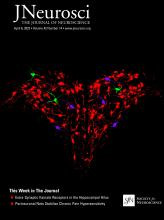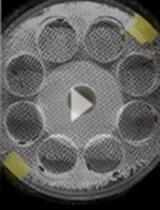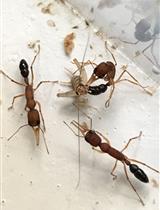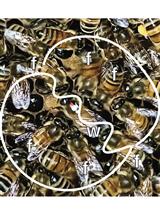- EN - English
- CN - 中文
Habituation of Sugar-Induced Proboscis Extension Reflex and Yeast-Induced Habituation Override in Drosophila melanogaster
黑腹果蝇对糖诱导的长鼻伸展反射的习惯化和酵母诱导的习惯化覆盖
发布: 2023年12月05日第13卷第23期 DOI: 10.21769/BioProtoc.4891 浏览次数: 1386
评审: Nafisa M. JadavjiSurya Jyoti BanerjeeAnonymous reviewer(s)
Abstract
Habituation, the process by which animals learn to ignore insignificant stimuli, facilitates engagement with salient features of the environment. However, neural mechanisms underlying habituation also allow responses to familiar stimuli to be reinstated when such stimuli become potentially significant. Thus, the habituated state must allow a mechanism for habituation override. The remarkably precise knowledge of cell identity, connectivity, and information coding in Drosophila sensory circuits, as well as the availability of tools to genetically target these cells, makes Drosophila a valuable and important organism for analysis of habituation and habituation-override mechanisms. Studies of olfactory and gustatory habituation in Drosophila suggest that potentiation of GABAergic neurons underlies certain timescales of habituation and have specified some elements of a gustatory habituation-override pathway. More detailed understanding of gustatory habituation and habituation-override mechanisms will benefit from access to robust behavioral assays for (a) the proboscis extension reflex (PER) elicited by a sweet stimulus, (b) exposure paradigms that result in PER habituation, and, most critically, (c) manipulations that result in PER-habituation override. Here, we describe simple protocols for persistent sucrose exposure of tarsal hairs that lead to habituation of proboscis extension and for presentation of a novel appetitive stimuli that reinstate robust PER to habituated flies. This detailed protocol of gustatory habituation provides (a) a simple method to induce habituation by continuous exposure of the flies to sucrose for 10 min without leading to ingestion and (b) a novel method to override habituation by presenting yeast to the proboscis.
Key features
• A protocol for stimulation of Drosophila’s taste (sugar) sensory neurons that induces gustatory habituation without satiation due to ingestion.
• A chemical (yeast) stimulation protocol that rapidly induces habituation override/dishabituation in sugar-habituated Drosophila.
Background
Habituation is a fundamental form of learning that is conserved across species. In habituation, the response to a persistent inconsequential stimulus is reduced, leading to an enhanced ability to attend to more pertinent stimuli. A defining feature of the habituated state is the presence of a latent ability to respond to the familiar stimulus (Thompson and Spencer, 1966; Rankin et al., 2009; Ramaswami, 2014). This latent ability to respond is made evident by the effect of a novel external stimulus, which results in override of habituation, i.e., restoration of a robust response in the habituated animal. This can also be observed when an animal is motivated to attend to the familiar stimulus (Kato et al., 2015). The neural mechanism of habituation has been extensively studied across different species and different modalities, particularly in Aplysia, Drosophila, and mouse, using a variety of different behavioral protocols (Castellucci et al., 1970; Krasne and Edwards, 2002; Engel and Wu, 2009; Ogg et al., 2015). In Aplysia, both homosynaptic depression at the sensory-motor synapse (Castellucci et al., 1970) and potentiation of an inhibitory interneuron synapse (Bristol and Carew, 2005) have been suggested as underlying mechanisms of habituation of the gill-induced siphon withdrawal reflex. Later studies in Drosophila and vertebrates indicate that heterosynaptic potentiation of inhibition can lead to olfactory, auditory, or gustatory habituation (Das et al., 2011; Paranjpe et al., 2012; Ramaswami, 2014; Kato et al., 2015). However, the neural correlates of habituation override in these types of habituation are only just beginning to be investigated (Trisal et al., 2022). Here, we first describe the protocol for the proboscis extension reflex (PER), which has been used previously to study gustatory habituation in Drosophila (Duerr and Quinn, 1982; Le Bourg, 1983; Fois et al., 1991; Engel and Wu, 2009; Paranjpe et al., 2012), and then a protocol to induce override of PER habituation following exposure to a novel sensory stimulus (Paranjpe et al., 2012; Trisal et al., 2022). The novel stimulus used is a non-invasive gustatory stimulus (10% yeast), which the flies have not encountered before, that is presented to the proboscis. Compared to previous publications on PER (Shiraiwa and Carlson, 2007; Li et al., 2022), we provide a simpler and potentially less traumatic method to immobilize the flies. In addition, our protocol (also used by Paranjpe et al., 2012) is unique in that it exposes the flies continuously to 10% sucrose (while preventing ingestion at the same time) to induce more robust PER habituation than in the original studies. Our approach allows a more dynamic range and time to study habituation and dishabituation. While our method requires approximately 15 min for analysis of an individual fly, it requires far fewer flies to reach statistical significance.
Materials and reagents
Biological material
Drosophila Canton-Special females, aged 3–4 days
Reagents
Sucrose (Fischer Scientific, catalog number: 15925)
Yeast (Sigma-Aldrich, catalog number: YSC2)
Corn flour (Avenue Supermarts Ltd)
Sugar (Avenue Supermarts Ltd)
D-Glucose (Qualigens, catalog number: Q15405)
Yeast extract (Himedia, catalog number: RM027)
Propionic acid (Qualigens, catalog number: Q26955)
Orthophosphoric acid (Qualigens, catalog number: Q29245)
Ethanol (Merck Millipore, catalog number: 100983)
Agar (Qualigens, catalog number: Q21185)
Tego-sept (Sigma-Aldrich, catalog number: M1650000)
Water (double distilled)
Solutions
10% sucrose solution (see Recipes)
2% sucrose solution (see Recipes)
10% yeast solution (see Recipes)
Corn meal media (1 L) (see Recipes)
Recipes
10% sucrose (weight/volume)
Reagent Quantity Sucrose 1 g Water (autoclaved double distilled) 10 mL 2% sucrose (weight/volume)
Reagent Quantity Sucrose 20 mg Water (autoclaved double distilled) 1 mL 10% yeast (weight/volume)
Reagent Quantity Yeast 500 mg Water (autoclaved double distilled) 5 mL Corn meal media (1 L)
Reagent Quantity Corn flour 80 g D-Glucose 20 g Sugar 40 g Agar 8 g Yeast extract 15 g Propionic acid 4 mL Orthophosphoric acid 0.6 mL Tego-sept 1 g (dissolved in 5 mL ethanol)
Laboratory supplies
Coverslips 18 mm × 18 mm (Polar Industrial Corporation, Blue Star)
1 mL syringes with attached needle of size 0.30 mm × 8 mm, gauge 30 G × 5/16 (Hindustan Syringes and Medical Devices Ltd, model: Dispovan U-40)
Synthetic hairbrush (Camlin, catalog number: 2066774)
Transparent nail polish (Lakme Truewear, model: CG012)
Styrofoam box (20 cm × 14 cm × 8.5 cm)
Crushed ice
Styrofoam tray (19 cm × 16 cm × 3 cm)
Glass vial for cold anesthesia (8.5 cm high × 2 cm diameter)
Metal (aluminum) plate (10 cm diameter)
Timer (West Bend, catalog number: 40005X)
Filter paper No. 1 (Indica, Indicators, catalog number: 74039)
Plastic box of dimension 13 cm × 11 cm × 8 cm
Plastic bottle for Drosophila culture 250 mL volume (Bharat Plastic Manufacturing Company, catalog number: FLBT-20)
Absorbent cotton wool (Prabhat Surgical Cotton Private Limited)
Equipment
Stereomicroscope magnification 20× (10× eyepiece, 2× objective), numerical aperture 0.142 (Olympus, model: SZ51)
Micromanipulator (Narishige Japan, model: MM3)
Behavior room or chamber with controlled temperature (21 °C) and humidity (60%)
Software
GraphPad Prism v8.4.2
Procedure
文章信息
版权信息
© 2023 The Author(s); This is an open access article under the CC BY-NC license (https://creativecommons.org/licenses/by-nc/4.0/).
如何引用
Readers should cite both the Bio-protocol article and the original research article where this protocol was used:
- Trisal, S., VijayRaghavan, K. and Ramaswami, M. (2023). Habituation of Sugar-Induced Proboscis Extension Reflex and Yeast-Induced Habituation Override in Drosophila melanogaster. Bio-protocol 13(23): e4891. DOI: 10.21769/BioProtoc.4891.
- Trisal, S., Aranha, M., Chodankar, A., VijayRaghavan, K. and Ramaswami, M. (2022). A Drosophila Circuit for Habituation Override. J. Neurosci. 42(14): 2930–2941.
分类
神经科学 > 行为神经科学 > 学习和记忆
您对这篇实验方法有问题吗?
在此处发布您的问题,我们将邀请本文作者来回答。同时,我们会将您的问题发布到Bio-protocol Exchange,以便寻求社区成员的帮助。
Share
Bluesky
X
Copy link












